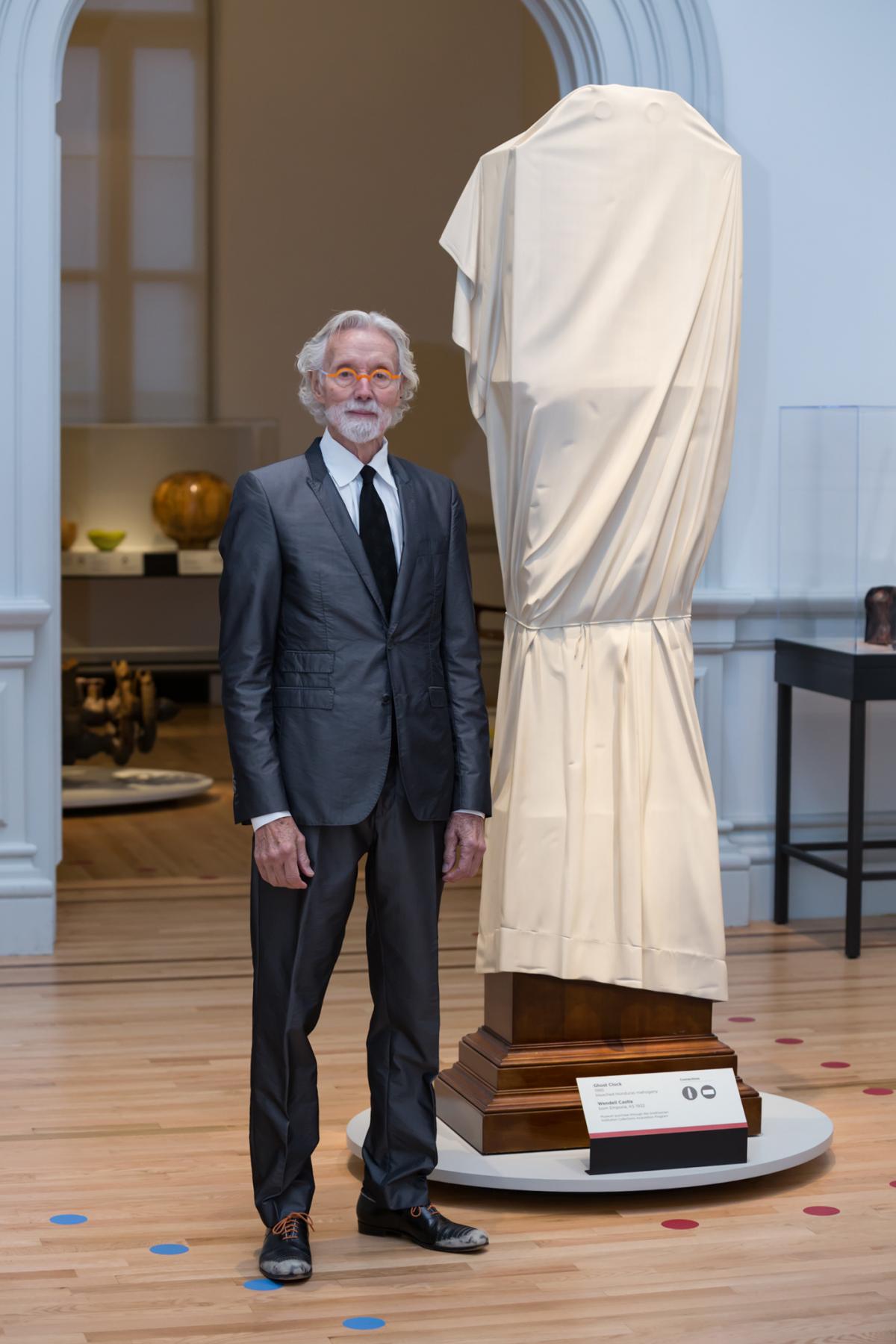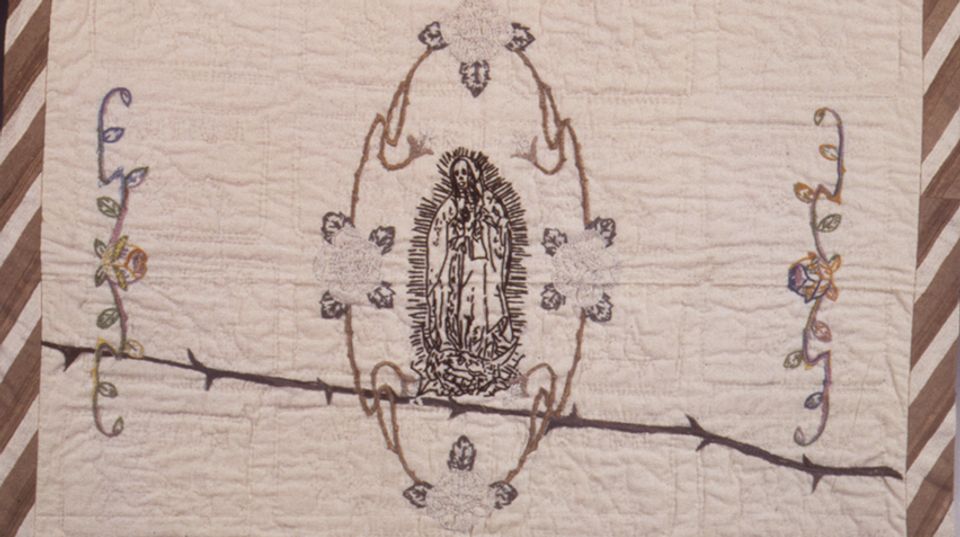
Master woodworker, furniture maker, and artist Wendell Castle died on January 20, at the age of 85. During his long and distinguished career, he helped define and redefine craft furniture in America.
I first came to Castle's work through what has become one of the museum's iconic pieces. Countless visitors to SAAM's Renwick Gallery have been puzzled, fooled, and delighted by his Ghost Clock. What appears to be a grandfather clock draped in white cloth is actually a trompe l'oeil work of art constructed from laminated and bleached Honduras mahogany.
In her catalogue, Craft for a Modern World, Nora Atkinson, the Lloyd Herman Curator of Craft, recounted a story that was a favorite of Michael W. Monroe, a former director of the Renwick. In 1990, an irate woman demanded to see Monroe, and was summoned by a volunteer on duty. Monroe met her in front of the recently acquired Ghost Clock. As Atkinson describes, "[She] explained to [Monroe] that this was her ninth visit to the museum since the clock had arrived, and she had come a long way to see it, yet here it was, still unceremoniously covered by a sheet, cinched neatly around the middle with a piece of twine, as it had been the last time, and the time before, and the time before that. It was disgraceful that it was still covered, standing in the galleries as it was. She just had to see it before she left, she explained."
After calming the woman, Monroe dashed to his office then returned with two pairs of white cotton gloves. He gave one pair to the woman, and then invited her to gently lift the "cloth" with her gloved hand. At last, she thought, the clock would be revealed. When she realized that the cloth was wood and the clock she was expecting underneath did not exist, she returned the gloves to Monroe, and proceeded to make her way down the Renwick's grand staircase until she reached the exit.
I have to tell you, she's not alone. A friend of mine just visited with her father and she had to stop him from reaching out and touching the "cloth." If you stand in the gallery near Ghost Clock you will see the repeated faces of astonishment and amazement. And, as Atkinson adds, "...It is a gentle reminder to look closer, that things are not always as they seem, for the visual language does not always so neatly reveal its intentions."
Castle invented his own visual language. In reference to the beginning of his career he said, "...The only way I could make what I wanted to make was to make it myself." In 2016, he participated in the museum's Maloof Symposium on "Furniture and the Future" and spoke about his embrace of evolving digital technologies and his acquisition of a robot named Mr. Chips to help assemble the larger pieces. His inventive work spans the second half of the twentieth century and the first part of the twenty-first.
Ghost Clock is a meditation on time, that has, in its own way, become timeless.
In addition to Ghost Clock on view at the Renwick through February 19, Castle's Music Stand can be seen at SAAM's Luce Foundation Center.
Related Blog Post
Knock Wood: The Future of Furniture is In Their Hands

















